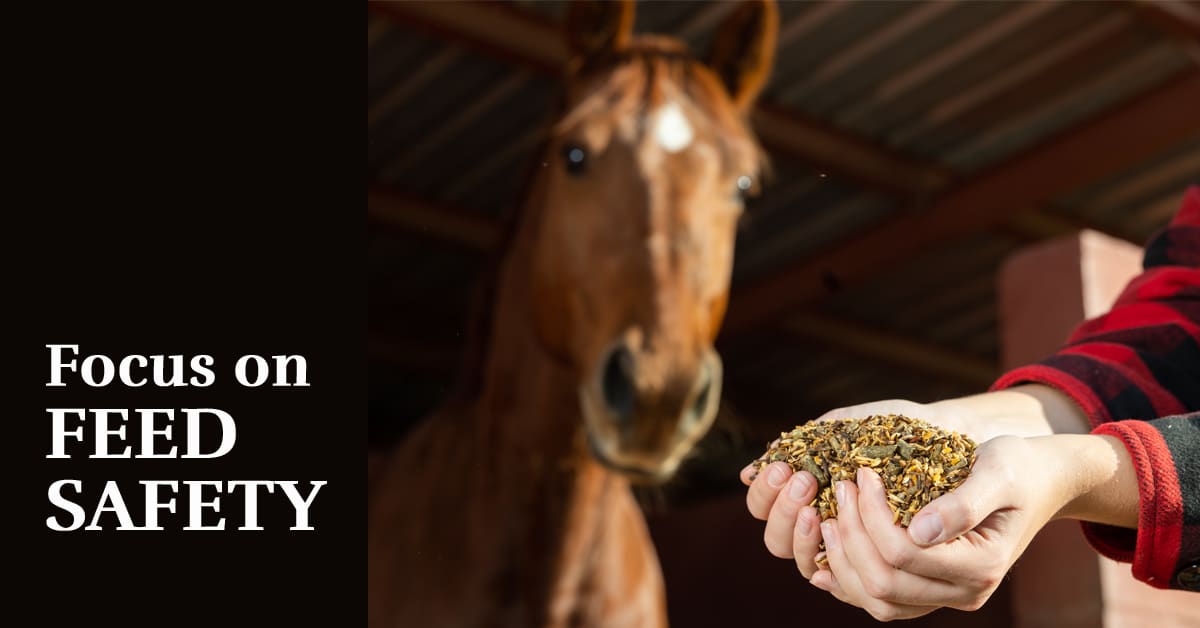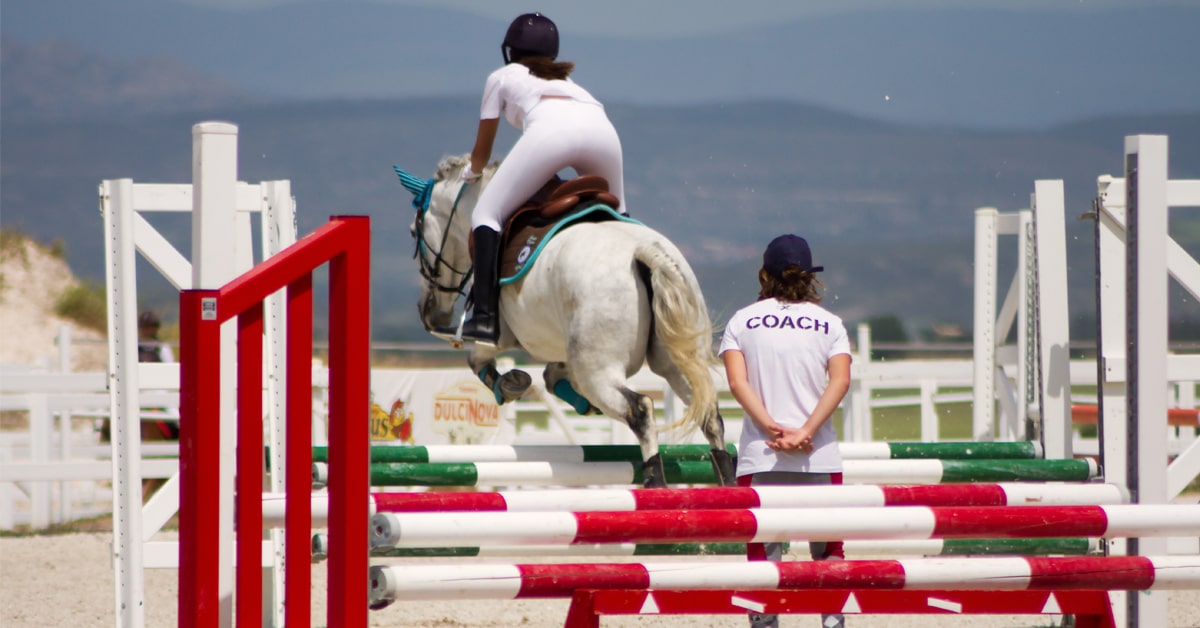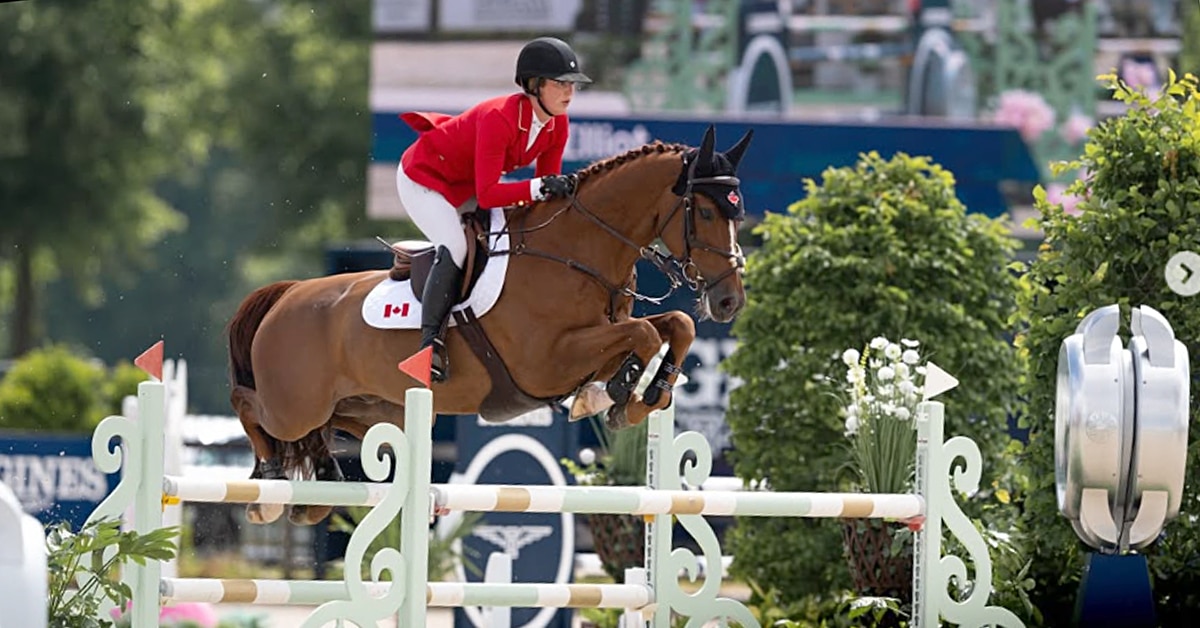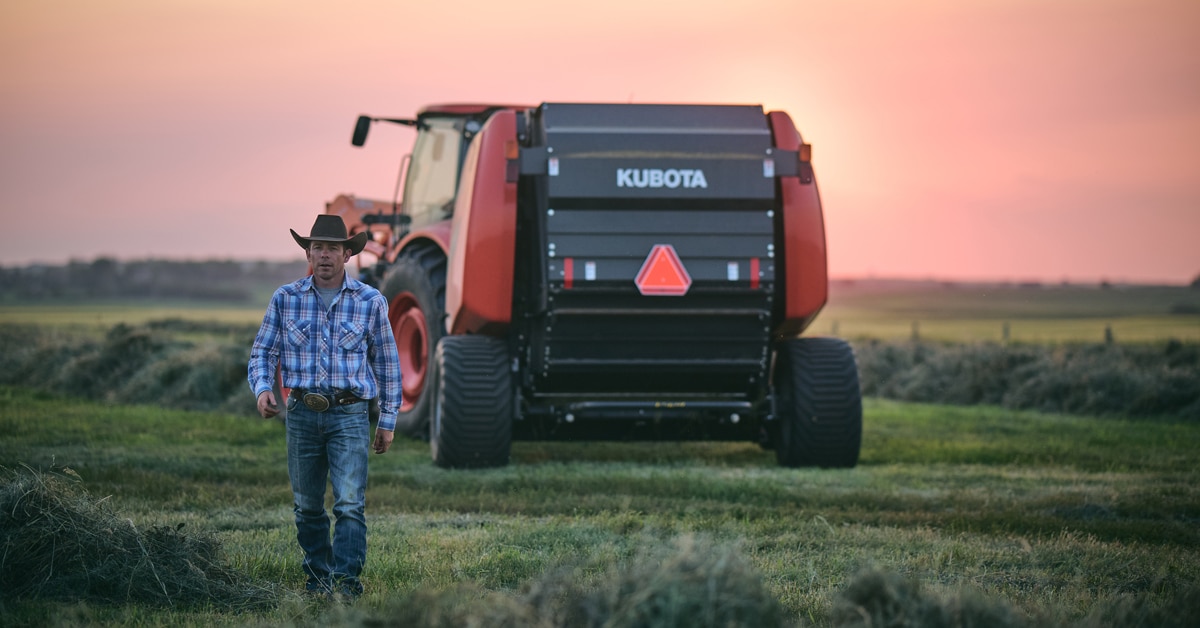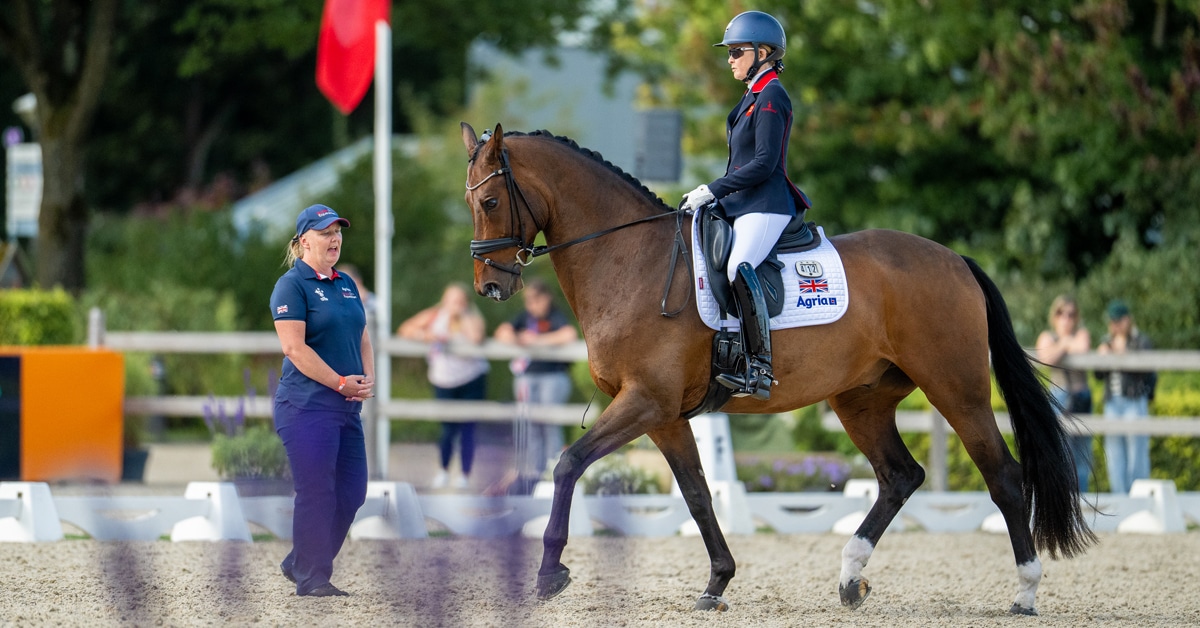Does it feel like your horse is going to pull your arms from their sockets during a ride? Does he struggle to perform correct transitions? A horse that leans on your hands is heavy on the forehand and not properly engaging his hind end. If you are an eventer or dressage enthusiast, this issue impacts your dressage marks; for the jumping sports it affects his turning and jumping ability. A horse that is very heavy on the forehand can also be prone to tripping, which is unsafe regardless which discipline you ride.
The key to getting a horse to lighten on the forehand is to get him to use his hind end properly. But how do you achieve this? Here are tips from 2012 Olympian Michele Mueller, who coaches eventers and dressage riders at her Cedar Valley Stables in Port Perry, ON.
Knowledgeable riders always work to keep their horses off the forehand. First of all, you should check your position to make sure you are not loading your horse’s front end. Are your hands too low or are you sitting too far forward? You want to be sitting up and carrying your hands independently, riding into the bridle rather than trying to pull your horse’s head down.
Here are some exercises I find effective for getting a horse off the forehand and building hindquarter strength.
1. Start warming your horse up in a long and low frame, incorporating some circles.
2. Ask for a lot of quick, short transitions: walk-halt-walk, walk-trot-walk, canter-trot-canter, and so on. You want your horse to do them sharply and respond promptly when you ask for the upward or downward transition.
3. Keep your leg on when you ask for a downward transition, using your leg and seat to push the horse into the bridle. I tell my younger students that not keeping your leg on when you ask for a downward transition is like riding your 10-speed bike and only using the front brakes to slow down or stop. If you do that, your rear tire tends to slip or even come off the ground, throwing you forward.
4. Lateral work is excellent for engaging the hind end and building strength. I incorporate half-passes, renvers (haunches-out) and travers (haunches-in) into the warm-up to engage the hind end. I find a horse can still be on the forehand with leg yielding, so I don’t tend to use that move a lot in the warm-up. If you don’t understand how to ride these movements, work with a coach, as it’s important to know how to ride them correctly.
5.Practice turns to the right and left, trying to keep the turns as square as possible without letting your horse bulge through the outside shoulder. To execute the square turn properly, you are going to be using your legs more than your hands and your horse is going to have to lift his shoulder and use his hind end as he turns.
6. Use hills to help build your horse’s hind end strength. He’ll have to bend his hocks and ‘sit’ as he travels down a hill. Start with the walk, then progress to the trot and canter. Some horses will naturally set themselves back and use their hindquarters; make sure you are not leaning forward and you may have to use half-halts if your horse is pulling on you or heavy on the forehand as he descends the hill. Make sure you are not leaning forward and putting extra weight on your horse’s front end.
7. Set up a series of trot poles – two on each side of a very low jump, set about 9 feet apart. Trot and canter over the poles. The horse will lift his front end as he travels through the poles. Your horse may jump over the little jump in the middle or might just step over – either way is fine.
8.Bounces are another way to get a horse to effectively use his hindquarters. You can set up as many as six cavaletti bounces in a row (about 9 feet apart for a trot approach and about 12 for canter approach, depending on your horse’s stride) and trot and canter through a few times. Don’t drill this, as this gymnastic exercise is hard work.
If you incorporate some of these exercises into your schooling and ride your horse consistently with the goal of keeping him off the forehand, you should notice that he is becoming lighter in the bridle and better engaging his hind end.
Horses with ‘uphill’ builds find it easier to lighten their front end. Sometimes conformation works against us, as horses built ‘downhill’ have to work harder to get off their forehand and use their hind ends. It is do-able, but it takes time and consistent riding.
The Latest


